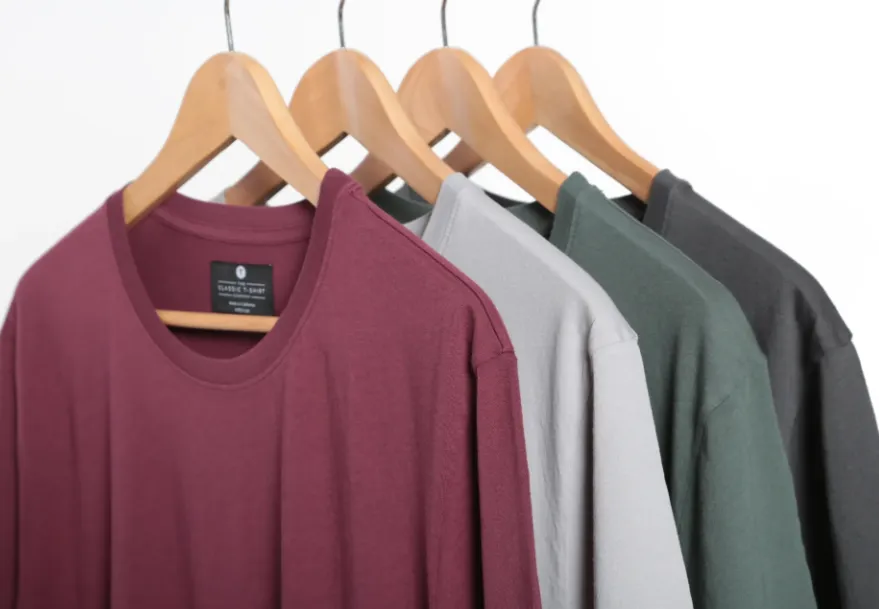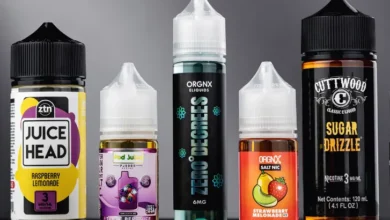Essentials for Your Clothing Brand: Wholesale Blank Shirts

When you’re venturing into the world of fashion with your own brand, selecting the right wholesale blank shirts isn’t just about finding a supplier and placing an order. It’s about aligning those choices with the core values and expectations of your target audience. You’ve got to consider the fabric quality, the fit, and how these shirts can be transformed into unique pieces that speak your brand’s language. But how do you assess these factors effectively without compromising on cost and sustainability? Let’s explore the key strategies that can help you navigate this complex landscape, ensuring your brand stands out for all the right reasons.
Contents
- 1 Understanding Wholesale Markets
- 2 Choosing the Right Fabric
- 3 Evaluating Shirt Quality
- 4 Sizing and Fit Considerations
- 5 Cost-Effective Purchasing Strategies
- 6 Customization Possibilities
- 7 Selecting Reliable Suppliers
- 8 Sustainability and Ethics
- 9 Marketing Your Unique Brand
- 10 Customer Feedback and Iteration
Understanding Wholesale Markets
To effectively navigate the wholesale markets for blank shirts, you’ll need to grasp their dynamic pricing structures and bulk purchasing options. As you dive into the world of wholesale, understanding market trends becomes crucial. Prices can fluctuate based on factors like seasonality, fashion cycles, and even global economic conditions. You’ll want to stay ahead of these trends to secure the best prices and maintain your inventory efficiently.
Supplier diversity is another key element to consider. By diversifying your suppliers, you’re not only mitigating risks associated with relying on a single source, but you’re also likely to uncover more competitive pricing and innovative products. This approach enables you to offer a broader range of styles and qualities, catering to a wider audience and enhancing your brand’s appeal.
Choosing the Right Fabric
Selecting the right fabric is crucial for the durability and appeal of your clothing line, as it directly impacts customer satisfaction and brand reputation. When you’re browsing through options, focus on fabric durability and color retention, as these are key factors that can set your brand apart in a crowded market.
Cotton is a favorite for its breathability and softness, but if you’re aiming for enhanced durability, consider a cotton-polyester blend. This combination offers the comfort of cotton with the added strength and color retention of polyester, ensuring that your shirts withstand frequent washes without fading.
For eco-conscious brands, bamboo and hemp fabrics are trending due to their sustainability and durability. These materials not only last long but also hold their color well, which is essential for maintaining the look of your designs over time.
Evaluating Shirt Quality
After choosing the right fabric, you’ll want to assess the overall quality of the blank shirts to ensure they meet your brand’s standards. Dive into the details and kickstart your evaluation with stitch density—a critical indicator of durability. You’re looking for tight, even stitches that promise a long-lasting wear. Don’t skimp on examining these; the last thing you need is your products unraveling at the seams after a few washes.
Next, zero in on color consistency. This isn’t just about the initial wow factor. You need to ensure that each shirt is uniformly dyed, without patches or variations, especially across multiple batches. Remember, consistent coloring is key to brand recognition and customer satisfaction. It also reflects on your brand’s attention to quality control, something that’s non-negotiable in today’s market.
Sizing and Fit Considerations
Ensure your brand stands out by offering shirts that not only look great but also fit perfectly across all sizes. Embracing size diversity is essential; it’s not just about adding more sizes, but about understanding how each size fits on a variety of body types. You’ll want to be precise in your measurements and consider the unique fit each style needs. This means going beyond the standard S, M, L labels and ensuring each item is tailored to fit accurately.
To nail fit accuracy, you’ll need to work closely with your suppliers. Ask for samples in different sizes and conduct fittings to check the real-world application of each size. Remember, a well-fitting shirt enhances the wearer’s confidence and is likely to become a repeat purchase.
Stay ahead of the curve by being aware of market trends related to fit and comfort. Incorporate stretchable fabrics or adjustable features that can cater to a wider audience without compromising on style. This attention to detail won’t only set your brand apart but also build a loyal customer base that trusts your commitment to quality and inclusivity.
Cost-Effective Purchasing Strategies
Having established the importance of size and fit, it’s equally important to focus on how you can optimize costs when purchasing wholesale blank shirts for your clothing brand. One of the most effective strategies is leveraging bulk discounts. By buying in larger quantities, you’ll typically benefit from a reduced per-unit cost, which can significantly lower your overall expenditure. This approach not only helps in managing your budget but also ensures you have sufficient inventory for your production needs.
Additionally, you should consider seasonal buying. Many suppliers offer substantial discounts during specific times of the year. Planning your purchases to align with these periods can lead to considerable savings. For instance, buying at the end of a season when suppliers are looking to clear out inventory can secure you lower prices. This requires staying ahead of market trends and planning your inventory purchases well in advance.
Being detail-oriented and market-savvy in these aspects won’t only cut costs but also stabilize your supply chain. Remember, the key is to buy smart—utilize bulk discounts and capitalize on seasonal buying opportunities to make the most of your budget while stocking up on essential wholesale blank shirts.
Customization Possibilities
Exploring customization options allows you to infuse your brand’s unique identity into each wholesale blank shirt. Opting for diverse print techniques not only sets your apparel apart but also caters to varied consumer tastes. Whether you’re thinking about screen printing for its durability and cost-effectiveness or direct-to-garment printing for intricate designs, each method offers its own set of advantages. Dive into the latest trends and evaluate which techniques align best with your brand ethos and target market.
Color selection is another critical aspect. It’s not just about picking colors; it’s about choosing the right shades that resonate with your brand and appeal to your audience. Consider the psychological impact colors have—blue can evoke trust, red can stimulate energy, and green can relax. Stay ahead of the curve by integrating seasonally popular colors to keep your offerings fresh and exciting.
Selecting Reliable Suppliers
Selecting a reliable supplier is crucial for maintaining the quality and consistency of your wholesale blank shirts. When you’re developing your clothing brand, having a supplier who meets your needs not only ensures product quality but also enhances your brand’s reputation. Start by exploring supplier diversity; a mix of established and emerging suppliers can provide you with a broad range of options and innovative materials.
Dive into their production capabilities, past collaborations, and client testimonials. This detail-oriented approach will give you insights into their reliability and the consistency of their output. Don’t just settle for the first option. Compare multiple suppliers to gauge which ones really align with your brand vision and market needs.
Negotiation techniques are key in finalizing your supplier choice. Effective negotiation isn’t just about lowering prices but also about ensuring value, such as timely deliveries and flexible order quantities. Understand their cost structures and negotiate terms that support both parties’ growth. You’ll need to be market-savvy here, balancing cost with potential for long-term partnerships. Remember, the right supplier relationship is about more than just transactions; it’s about building a team that supports your brand’s journey.
Sustainability and Ethics
After securing a reliable supplier, it’s also vital to ensure that your wholesale blank shirts are produced sustainably and ethically. As a fashion entrepreneur, you’re not just creating a brand; you’re setting a standard. Consumers are increasingly conscious about the environmental and social impact of their purchases. This shift isn’t just a trend—it’s a movement towards a more responsible industry.
Firstly, consider the materials. Opt for organic cotton or recycled fabrications that lessen environmental impact. But don’t stop there. Eco-friendly dyes are crucial. Traditional dyeing processes use vast amounts of water and chemicals, which can be harmful. Eco-friendly dyes minimize these effects, ensuring that your product is as green as it’s clean.
However, sustainability isn’t just about the environment. It’s also about people. Fair labor practices are non-negotiable. Ensure your supplier adheres to standards that respect workers’ rights and provide fair wages. Transparency in your supply chain isn’t just good ethics—it’s good business. By promoting these practices, you’re not only protecting the planet and its people, you’re also building a brand that stands for something more. This commitment can distinguish your label in a crowded market, resonating deeply with your target audience.
Marketing Your Unique Brand
To effectively market your clothing brand, you’ll need to craft a compelling narrative that highlights your unique commitment to sustainability and ethical practices. Embracing brand storytelling isn’t just about sharing what you do; it’s about conveying why it matters. Your story should resonate with your audience, connecting them emotionally to your brand’s core values and mission.
Digital outreach is your gateway to reach a broader audience. Leverage social media platforms to showcase your brand’s story through engaging content like behind-the-scenes videos, customer testimonials, and detailed posts about how your products are made. This not only boosts your visibility but also enhances customer trust and loyalty. Instagram, with its visual focus, is particularly effective for fashion brands. Utilize Instagram Stories and Reels to create dynamic, compelling content that speaks directly to the eco-conscious consumer.
Don’t forget the power of a well-designed website. It should reflect your brand’s aesthetic and ethical stance, ensuring every visitor instantly understands your mission. Incorporate SEO strategies to enhance your online presence, making it easier for potential customers to find you when searching for sustainable fashion options.
Customer Feedback and Iteration
Gathering customer feedback is crucial as you refine your clothing line to better meet market demands and trends. In the hyper-competitive fashion industry, understanding your customer’s needs and reactions can significantly influence your brand’s trajectory. Implementing a robust system for collecting and analyzing feedback ensures you’re not just guessing what works, but actually responding to real consumer insights.
To streamline this, set up diverse feedback channels. Consider integrating a direct feedback form on your website, and actively monitor social media platforms where customers frequently share their experiences. Make it easy for them to reach out; whether they’re raving about a favorite shirt or suggesting improvements, their opinions are gold.
Don’t forget the power of review incentives. Offering a discount on their next purchase or entering them into a giveaway can motivate customers to share their thoughts. This not only boosts the quantity of feedback you receive but can also enhance customer loyalty.


